#Alexander Turnbull
Explore tagged Tumblr posts
Photo
yusefalahmad

GIF IT UP 2016 entry by Mark Beatty from Greytown, Wairarapa (New Zealand). Source material from Alexander Turnbull Library via DigitalNZ.
Mark writes: “I associate this period, the 1880s in very monochromatic tones, probably because of the influence of photography. I like the fact that Victorians did enjoy having vibrant colours in their homes. I love that the ephemera collection tells us a bit about this past.”
This gif is made available under a CC-BY-SA license.
#GIF IT UP#2016#2010s#Mark Beatty#Greytown#Wairarapa#New Zealand#Alexander Turnbull#Alexander Turnbull Library#DigitalNZ#yusefalahmad
86 notes
·
View notes
Text


jessica alexander, makeup by brooke turnbull for the london premiere of the little mermaid
717 notes
·
View notes
Text

Private Simpson, D.C.M., and His Donkey at Anzac, Horace Moore-Jones, 1918
#art#art history#Horace Moore-Jones#war art#history#military history#WWI#World War One#First World War#Gallipoli Campaign#genre painting#watercolor#New Zealand art#20th century art#Alexander Turnbull Library
202 notes
·
View notes
Text

Jessica Alexander for Cartier
makeup by Brooke Turnbull
15 notes
·
View notes
Text


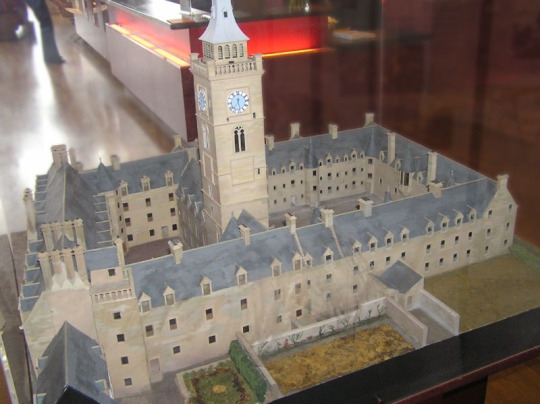





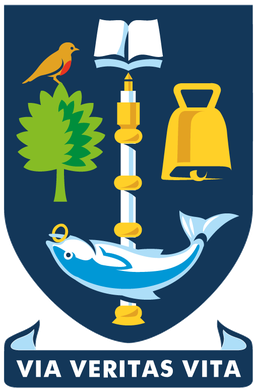

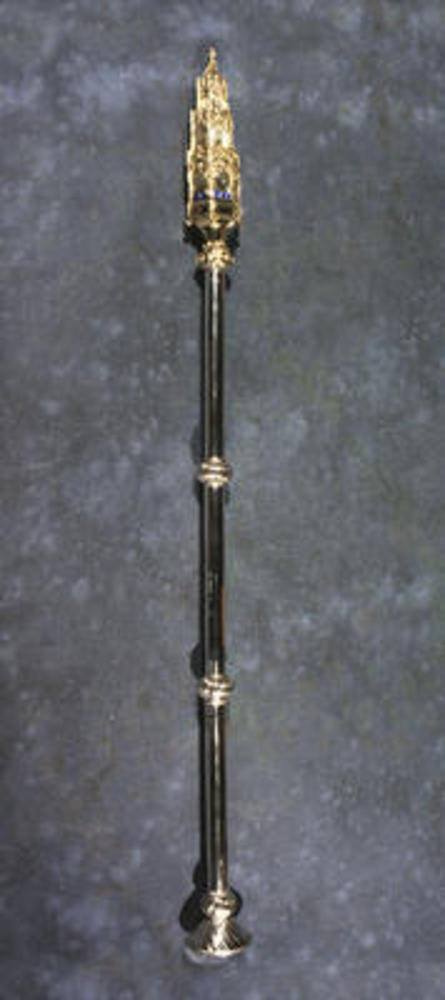
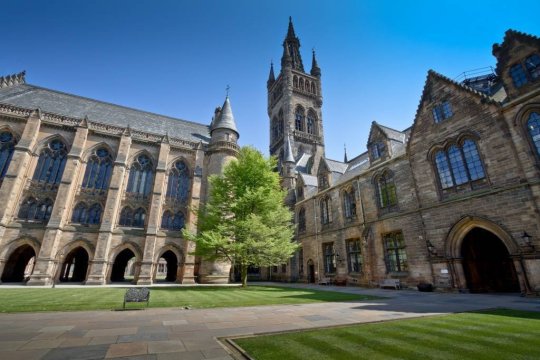

On January 7th 1451 a Papal Bull from Pope Nicolas IV enabled the foundation of Glasgow University.
Today The University is 574 years old and is the second oldest University in Scotland after St Andrews.
Now housed mainly in Glasgow's West End the origins on the institution however lie in the city's oldest street, in the Merchant City.
The university was inaugurated in 1451 at the request of William Turnbull, Bishop of Glasgow after a Papal Bull was issued by Pope Nicholas V. It was part of King James II's plan to bring Scotland up to speed with England – which already had two universities, Oxford and Cambridge.
The original Bull was among the treasures of the Metropolitan See taken to France by Archbishop Beaton at the Reformation but the modern University retains a transcript made in 1490. Beaton also took with him the University mace which had been made in 1465. Unlike other treasures, this was recovered and returned to the University 30 years later, and is still in its possession today.
Lectures were originally held in Glasgow Cathedral, before moving to nearby buildings on the city's High Street in 1457.
In 1563, Mary, Queen of Scots granted the university a 13-acre site on Glasgow's High street that had, until the Reformation, been home to a Dominican (Blackfriars) friary. The Old College ran along the busy High Street, with a main gateway in its centre that led through to two courtyards and walled gardens.
But as student numbers rocketed, the university was force to sell up their Old College campus and move somewhere cheaper. In 1863 it was bought for £100,000 to the City of Glasgow Union Railway Company, to be used as a goods yard. It was later demolished and housing was built there instead.
The decision was heavily criticised at the time as an act of "cultural vandalism." Nevertheless, the Uni heading west to Gilmorehill – away from the polluted air and the hustle and bustle of the city.
Work started on the new site in the west end in 1866, with the university taking up official residence in 1870.
Prolific architect George Gilbert Scott undertook the grand task of designing the new University buildings – which were the biggest in Britain beside the Houses of Parliament at the time.
The decision not to open up the commissioning process to other designers was met with controversy… Not to mention Scott's Gothic style went against the grain of the architectural landscape of the city, which ventured towards a Greek design.
According to Glasgow Uni's website, esteemed architect Alexander 'Greek' Thomson was not too impressed. He complained Scott wouldn't pay the project the attention it deserved because of how busy he was in his career.
He also added: "There is not a modern Gothic revival building of more than ten years standing that any one cares a straw about." Meoooow.
Nevertheless, Scott pressed on - building one of the most striking landmarks in the west end. The Bute and Randolph halls were completed after Scott's death in by his son Oldrid in 1891, which also included the Gothic bell tower, which stands at 278 feet high.
The Lion and Unicorn staircase was also famously moved, brick by brick, to Gilmorehill – now leading into the west wing of the main building beside the University Chapel.
Pearce Lodge, which sits at the bottom of University Avenue, is also formed by various parts of the Old College buildings. The stonework entrance to the original High Street building was also carefully erected at the gatehouse of the new campus.
The university expanded further over the years – including the A-listed reading room in the 1930s. It also snapped up a number of Victorian terraced houses, where the departments of Psychology, Computing Science and most of the Arts Faculty are based. Elsewhere. the leafy Garscube estate was bought in 1947 for The Veterinary Sciences school in Bearsden.
So, next time you see that regal clock tower and spire looming against the west end skyline, you can remember Glasgow Uni's journey across the city to its rightful place.
To find out more about the history of Glasgow University, visit their website.
8 notes
·
View notes
Text

Scene in the Fiji countryside with a steam locomotive, open air carriages, and passengers, 1930s.
PC : Alexander Turnbull Library, Wellington, New Zealand
2 notes
·
View notes
Note
Fellow Fitzgerald lover, I see you. Any books about him that you recommend?
hi!! ohhh thats a good question.. honestly, i just read everything i could find about him online XD im not very picky
but uh. id recommend beloved infidel by sheilah graham. of course. tbh memoirs interested me much more than just biographies... however i cant say i recommend hemingways the moveable feast, me personally i liked morley callaghans "that summer in paris" better. but maybe im just a hater
i think andrew turnbulls "scott fitzgerald" (1962) is pretty good. also i really like alexander livergants "fitzgerald" (2015), but im not sure if its ever been translated into english...
theres also a legendary book called hemingway vs fitzgerald: the rise and fall of a literary friendship by scott donaldson, and its. um. well its. its A Book. i dont think its bad, its pretty informative and interesting and easy to read, but it just seemed weird to me sometimes. idk. (btw donaldson actually wrote several fitzgerald biographies, like fool for love (1983) or princeton'17 (1979), you can check these out if youre interested)
if youre interested in fitzgeralds friendship with hemingway, theres also "scott and ernest: the authority of failure and the authority of success" by matthew j bruccoli, which is also Not Bad but i personally prefer donaldsons book...
yeah i think thats it.. at least thats what i can remember rn sdljkfsdjklfjk
4 notes
·
View notes
Photo

"Fijians on a drua (double hulled canoe), Lasakau Sea, 1800s. Photo by Alexander Turnbull. From "Report of the Scientific Results of the Exploring Voyage of HMS Challenger during the years 1873 - 1876". https://www.instagram.com/p/CpTIHFRtRFw/?igshid=NGJjMDIxMWI=
56 notes
·
View notes
Text
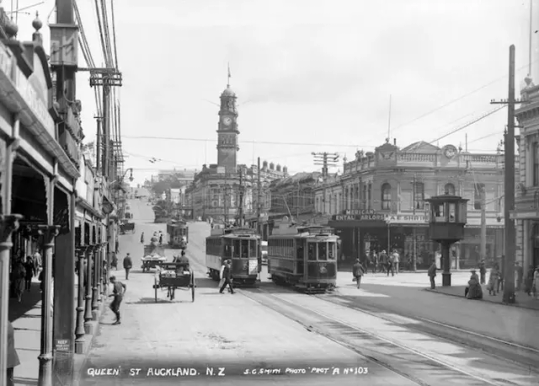
Queen Street, Auckland
Queen Street, Auckland. Smith, Sydney Charles, 1888-1972: Photographs of New Zealand. Ref: 1/2-046200-G. Alexander Turnbull Library, Wellington, New Zealand. /records/22365578
3 notes
·
View notes
Text

Katherine Mansfield, 1916–17, photography taken by Lady Ottoline Morrell
Kathleen Mansfield Murry (née Beauchamp; 14 October 1888 – 9 January 1923) was a New Zealand writer and critic who was an important figure in the modernist movement. Her works are celebrated across the world, and have been published in 25 languages.
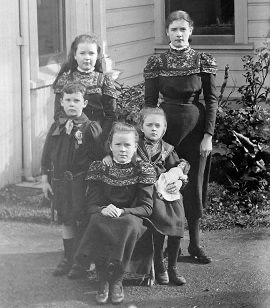
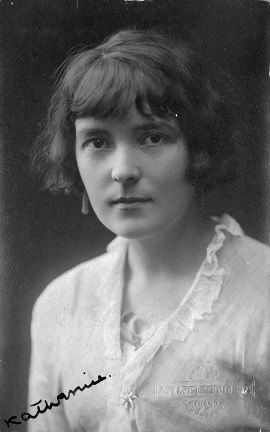
Katherine Mansfield 1914. Alexander Turnbull Library, 1/4-017274-F.
Partners:
Maata Mahupuku
Edith Kathleen Bendall
Ida Constance Baker
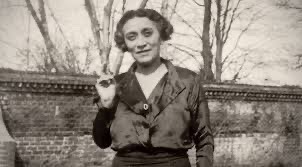
Maata Mahupuku, also known as Martha Grace and Martha Asher (10 April 1890 – 15 January 1952), was the muse and lover of short-story writer Katherine Mansfield. Of Māori ancestry, descended from a New Zealand tribal leader, she identified with the Ngati Kahungunu iwi. Via Wikipedia
Martha Grace aka Maata Mahupuku in a school photo in 1901
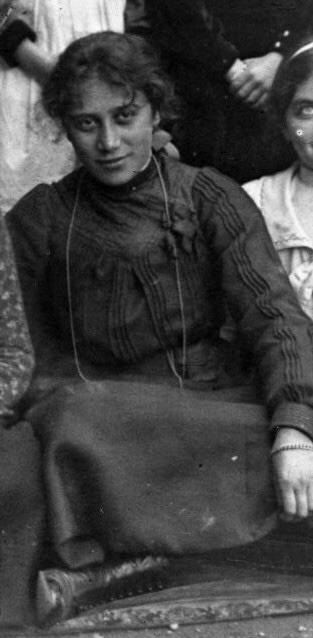
#Lady Ottoline Morrell#art by women#art#palianshow#lesbian#lesbian visibility#Katherine Mansfield#new zeland
6 notes
·
View notes
Text
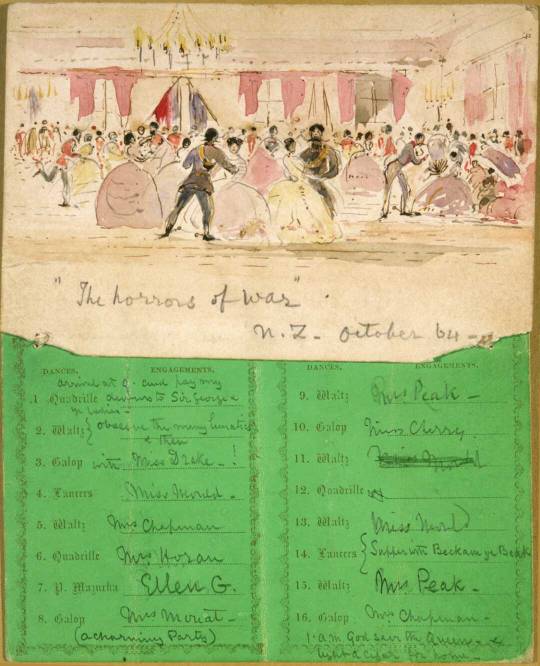
"The horrors of war" - N. Z. October 1864
A dance card for, then illustrated by Edward Arthur Williams (1824-1898)
Description: Ballroom scene at Government House, Auckland with soldiers partnering women in colourful ballgowns, a chandelier lighting the scene. The picture is attached to a green dance card belonging to the artist.
Alexander Turnbull Library
Dance card transcription (by me): Note: W=hand written; P=Printed on the card
[both pages have columns with numbered dances, and spaces to write engagements]
[under first headings:] [column one] [W:] Arrived at 9 - card has my [P:] 1. Quadrille [W:] (unintelligible) to Sir George & Mr Larkin [P:] 2. Waltz [W:] { observe the many lunatics & then [P:] 3. Galop [W:] with Miss D Lake ! [P:] 4. Lancers [W:] Miss Morel [P:] 5. Waltz [W:] Mrs Chapman [P:] 6. Quadrille [W:] Mrs Horan [P:] 7. P. Mazurka [W:] Ellen G. [P:] 8. Galop [W:] Mrs Munat [W:] (a charming Party) [column two] [P:] 9. Waltz [W:] Mrs Peak [P:] 10. Galop [W:] Mrs Cherry [P:] 11. Waltz [W:] ["Miss Morel" has been crossed out] [P:] 12. Quadrille [W:] [little scribble] [P:] 13. Waltz [W:] Miss Morel [P:] 14. Lancers [P:] { Supper with Beckam & Beak [P:] 15. Waltz [P:] Mrs Peak [P:] 16. Galop [P:] Mrs Chapman [W:] 1 a.m. God save the Queen & light a cigar for home
(I hope I got this all correct - Miss Morel MAY BE Miss Munat, but unsure.)
#dance card#The horrors of war#N.Z.#New Zealand#Aotearoa#October 1864#1864#Edward Arthur Williams#illustration#Victorian#dress#gown#crinoline#corset#moustache#mustache#1860s#1800s#Government House#soldier#ladies#gentlemen#dance#quadrille#waltz#galop#lancers#P. Mazurka
6 notes
·
View notes
Text

Māori soldiers practice with Bren Guns near Maadi camp, just outside of Cairo in Egypt.
After enjoying a Christmas break behind the lines in December 1941, the 28th Māori Battalion resumed training almost immediately after the New Year of 1942.
(Source - Alexander Turnbull Library, National Library of New Zealand - Reference: DA-1068)
(Colourised by Paul Reynolds)
0 notes
Text
1976 when the signboard was new....48 years ago. Looking good today considering its age. Do we replace it?
0 notes
Text


SDL - Joyce Campbell
“A Different Light: First Photographs of Aotearoa” by Catherine Hammond and Shaun Higgins is a fully illustrated book with exhibitions showcasing early photography from the Hocken Library, Alexander Turnbull Library, and the Tāmaki Paenga Hira Auckland Memorial Museum. There are five essays and a thematic album of photographs in this book, exploring the history of photography in New Zealand from its inception in 1827, involve the earliest daguerreotype portraits to the Kodak box ‘Brownie’ in the 20th century. It presents a variety of perspectives on the evolution of photography in New Zealand, technical history, decolonized historical analysis, and insights from the study of studio and private album collections. The book contrasts the realism in historical photography with modern digital photography, capturing the directness and simplistic techniques of early photography and the progression of Māori photography.
Historical photography often conveys a naturalness in landscapes and social relations, avoiding the heavy quality seen in many modern images. I can apply this concept in my future work, as it aligns with my current practice of capturing different moments, such as friends laughing or people walking. I believe deliberate staging can detract from the realism of photos, making them feel stiff. Therefore, I aim to focus less on photo quality and extensive editing like adjusting angles, centring and colour and more on the expression of the moments and social interactions.
Additionally, the distinctive intimacy and social relations depicted in historical photographs offer valuable lessons. I intend to explore these areas further, presenting more natural and consistent photos. While it will be challenging without heavy editing, I aim to capture more authentic scenes around me and develop deeper social relationships through my images. This approach will help me present a more continuous and impactful narrative to my viewers.
0 notes
Text

Different Light: First Photographs of Aotearoa" is a book that goes along with an exhibition of early New Zealand photos from the Hocken Library, the Alexander Turnbull Library, and the Auckland Memorial Museum. The book has five essays and photo albums that look at New Zealand's photography from 1827 to the early 1900s when the first Kodak camera came out.
The essays give lots of details and interesting info, while the photos show early New Zealand life and the impact of colonialism. Angela Wanhalla’s introduction talks about how photographers were part of settler colonization, and Paul Diamond’s essay looks at how Māori communities changed. The book’s photos are very personal and informal, showing a natural view of life in 19th-century New Zealand, different from the formal European photos of the time. This book is perfect for photographers, historians, and anyone curious about New Zealand's history. Understanding the historical context of early New Zealand photography can help you incorporate themes of connection and transformation in your work, highlighting the personal and societal impacts of your environment.
0 notes
Text
When Queen Elizabeth’s reign is threatened by ruthless familial betrayal and Spain’s invading army, she and her shrewd adviser must act to safeguard the lives of her people. Credits: TheMovieDb. Film Cast: Elizabeth I, Queen of England: Cate Blanchett Sir Walter Raleigh: Clive Owen Sir Francis Walsingham: Geoffrey Rush Sir Christopher Hatton: Laurence Fox Amyas Paulet: Tom Hollander Elizabeth Throckmorton: Abbie Cornish Robert Reston: Rhys Ifans King Philip II of Spain: Jordi Mollà Mary, Queen of Scots: Samantha Morton Anthony Babington: Eddie Redmayne Calley: Adrian Scarborough William Walsingham: Adam Godley Archduke Charles: Christian Brassington Count Georg von Helfenstein: Robert Cambrinus Dr. John Dee: David Threlfall Spanish Minister: Vidal Sancho Ursula Walsingham: Kelly Hunter Lord Howard: John Shrapnel Torturer: Sam Spruell Cellarman: David Sterne Admiral Sir William Winter: David Robb Courtier: Jonathan Bailey Walsingham’s Servant: Steve Lately Woman with Baby: Kate Fleetwood Infanta Isabel of Spain: Aimee King Annette: Susan Lynch Mary Walsingham: Kristin Coulter Smith Queen Elizabeth’s Waiting Lady #1: Hayley Burroughs Queen Elizabeth’s Waiting Lady #2: Kirsty McKay Queen Elizabeth’s Waiting Lady #3: Lucia Ruck Keene Queen Elizabeth’s Waiting Lady #4: Lucienne Venisse-Back Laundry Woman: Elise McCave Margaret: Penelope McGhie First Court Lady: Coral Beed Second Court Lady: Rosalind Halstead Manteo: Steven Loton Wanchese: Martin Baron Walsingham’s Agent: David Armand Sir Francis Throckmorton: Steven Robertson Ramsey: Jeremy Barker Burton: George Innes Mary Walsingham: Kirstin Smith Old Throckmorton: Tim Preece Dance Master: Benjamin May Royal Servant: Glenn Doherty Dean of Peterborough: Chris Brailsford Executioner: Dave Legeno Spanish Archbishop: Antony Carrick Marriage Priest: John Atterbury First Spanish Officer: Alex Giannini Second Spanish Officer: Joe Ferrara Courtier: Alexander Barnes Courtier: Charles Bruce Courtier: Jeremy Cracknell Courtier: Benedict Green Courtier: Adam Smith Courtier: Simon Stratton Courtier: Crispin Swayne Mary Stuart’s Lady in Waiting: Kitty Fox Mary Stuart’s Lady in Waiting: Kate Lindesay Mary Stuart’s Lady in Waiting: Katherine Templar Courtier (uncredited): Morne Botes Young Boy (uncredited): Finn Morrell Tyger Salior (uncredited): Shane Nolan Film Crew: Screenplay: William Nicholson Director of Photography: Remi Adefarasin Editor: Jill Bilcock Original Music Composer: A.R. Rahman Original Music Composer: Craig Armstrong Set Decoration: Richard Roberts Stunts: Peter Pedrero Stunt Coordinator: Greg Powell Casting: Fiona Weir Stunts: Rob Inch Stunts: Andy Smart Additional Camera: David Worley Costume Design: Alexandra Byrne Supervising Sound Editor: Mark Auguste Production Design: Guy Hendrix Dyas Supervising Art Director: Frank Walsh Director: Shekhar Kapur Screenplay: Michael Hirst Editor: Andrew Haddock Art Direction: David Allday Set Costumer: Martin Chitty Sound Re-Recording Mixer: Steve Single Scenic Artist: Rohan Harris Stunts: Ray Nicholas Art Direction: Andy Thomson Art Direction: Jason Knox-Johnston Production Manager: Mark Mostyn Stunts: George Cottle Stunts: David Anders Stunts: Peter Miles Visual Effects Supervisor: John Lockwood Stunts: John Kearney Stunts: Paul Kennington Stunts: Nick Chopping Costume Supervisor: Suzi Turnbull Hairstylist: Morag Ross Art Direction: Phil Sims Music Editor: Tony Lewis ADR Recordist: Robert Edwards Stunt Double: Abbi Collins Script Supervisor: Angela Wharton ADR Editor: Tim Hands Art Direction: Christian Huband Visual Effects Supervisor: Richard Stammers Stunts: Rowley Irlam Assistant Art Director: Helen Xenopoulos Foley Artist: Mario Vaccaro Visual Effects Supervisor: Steve Street Property Master: David Balfour Greensman: Ian Whiteford Foley Editor: Andrew Neil Stunts: Gordon Seed Sound Re-Recording Mixer: Tim Cavagin Dialogue Editor: Sam Auguste Scenic Artist: James Gemmill Unit Publicist: Stacy Mann Camera Operator: Ben Wilson Visual Effects Editor: Aled Robinson Stunts: Paul Herbert Hairstylist: Do...
#16th century#armada#assassination#catholicism#england#lgbt interest#palace intrigue#queen elizabeth i#religious war#sea battle#Top Rated Movies#tudor
0 notes